Birds: Easy Ornithology Terms Explained for Beginners
Birds are some of the most diverse and fascinating creatures on Earth, captivating birdwatchers, breeders, and pet lovers alike. From tiny finches to talkative parrots, understanding their biology, behavior, and needs is key to appreciating and caring for them properly. This comprehensive guide covers everything from taxonomy and physical traits to breeding, captive care, and conservation.
Table of Contents
📚 Taxonomy and Classification
Bird taxonomy is the scientific process of categorizing birds into groups such as family, genus, species, and subspecies. Understanding classification helps bird enthusiasts trace evolutionary relationships, understand shared traits, and correctly identify each species — especially important for breeders and conservationists.
✨ Physical Description
Each bird species has unique visual features: size, feather colors, beak shape, and special markings. These physical traits help with identification and also indicate the bird’s age and health. Juvenile birds often have different plumage than adults, making observation crucial in every life stage.
🧑🤝🧑 Sexual Dimorphism
In many bird species, males and females differ in appearance. This is known as sexual dimorphism — seen in plumage coloration, body size, or even behavior. Recognizing these differences is especially useful during breeding season and for proper pair selection in captivity.
This dimorphism is not just for identification—it plays a role in survival and reproduction. The male’s vibrant colours aid in courtship displays, while the female’s camouflage is vital for nesting safety.
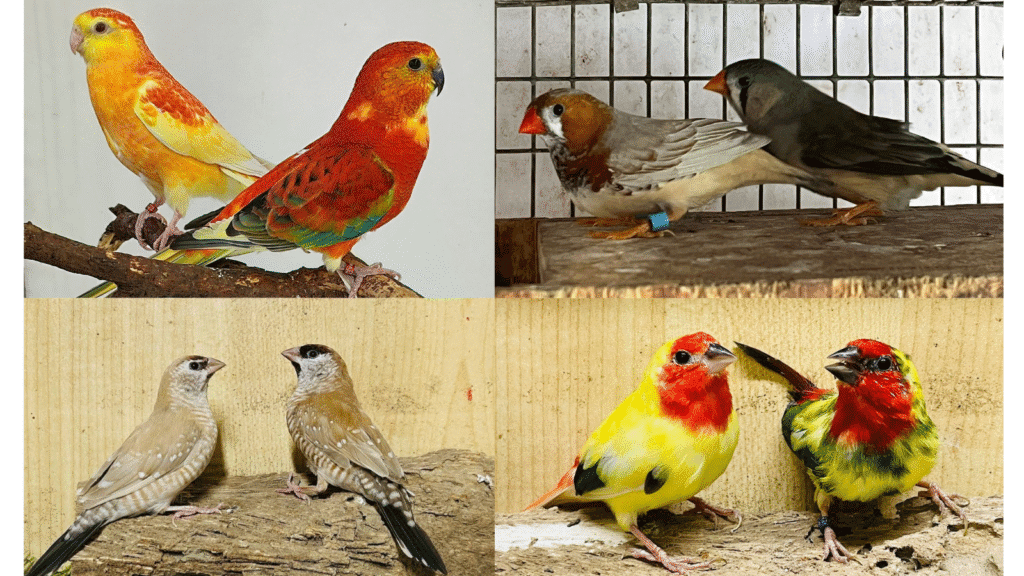
🌍 Distribution and Range
Birds are found on every continent, but each species has a specific geographic range. This section explores whether a bird is widespread or endemic to certain countries or regions, including migratory patterns and range shifts caused by habitat changes or climate.
🌲 Natural Habitat
Habitat refers to the environment where birds live naturally: forests, deserts, grasslands, wetlands, or even urban parks. Each bird species adapts to certain climates, vegetation, and elevation levels. Understanding habitat is essential to replicate appropriate conditions in captivity.
⚙️ Behavior and Habits
Bird behavior is shaped by species, environment, and social needs. Some birds are solitary, others highly social. This includes their daily routines, courtship dances, singing habits, feeding methods, and unique behaviors like dust bathing or preening.
🍽️ Diet and Feeding
Birds eat a wide variety of foods: seeds, fruits, insects, nectar, or small prey depending on the species. In captivity, feeding must be adapted to closely match their natural diet, including supplements for breeding, molting, or chick-rearing.
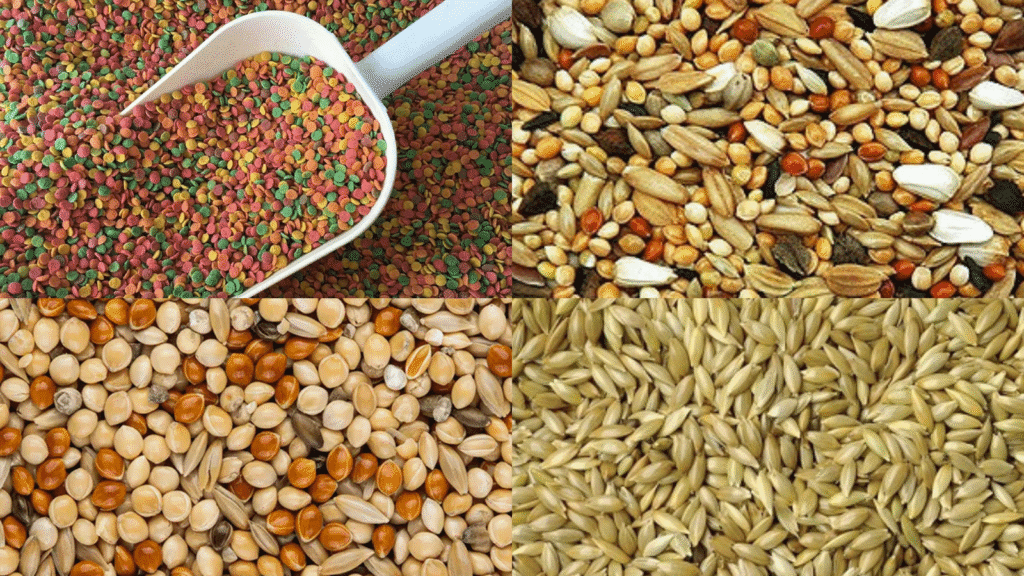
🪶 Molting and Plumage Cycles
Molting is the natural process of feather replacement, occurring seasonally or at certain life stages (like juvenile to adult transition). During molt, birds may appear duller or less active. Proper nutrition and care during molting are vital for feather quality and health.
⏳ Lifespan and Development
Birds go through various developmental stages: egg, hatchling, nestling, fledgling, juvenile, and adult. Lifespan varies widely by species and environment, with some birds living only a few years while parrots and raptors may live decades.
🎶 Sounds and Vocalizations
Birds use sounds for many reasons: attracting mates, marking territory, warning of danger, or staying in contact with their flock. Some species sing complex songs; others have simple calls. Learning to recognize calls can aid in species identification and care.
🧑🤝🧑 Social Structure and Interaction
Birds use sounds for many reasons: attracting mates, marking territory, warning of danger, or staying in contact with their flock. Some species sing complex songs; others have simple calls. Learning to recognize calls can aid in species identification and care.
💢 Aggressive Behavior
Some bird species, especially during breeding or nesting, display territorial or aggressive behavior toward others. In mixed aviaries or breeding setups, understanding which species are compatible is key to avoiding stress and injury.
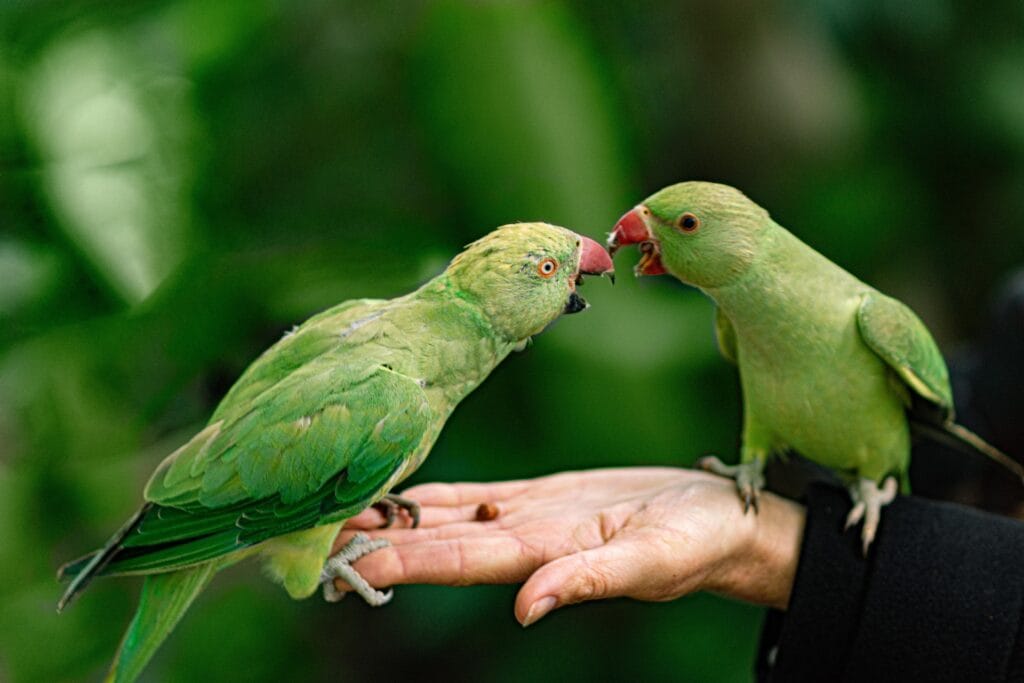
🏡 Captive Requirements
For pet and aviary birds, housing is critical. This includes cage or aviary size, perch variety, lighting, temperature, humidity, and cleanliness. Enrichment items, flight space, and quiet locations can dramatically improve bird well-being.
🪺 Nesting in Captivity
Many species need specific materials and nesting structures to breed successfully. Some prefer closed boxes (e.g., finches), while others use open baskets or cavities. This section covers how to provide nesting sites suited to your birds.
🧬 Breeding in Captivity
Breeding birds requires controlled conditions: adequate space, proper lighting, high-protein diets, and compatible pairs. Monitoring eggs, ensuring safe incubation, and feeding young chicks require experience and attention to detail.
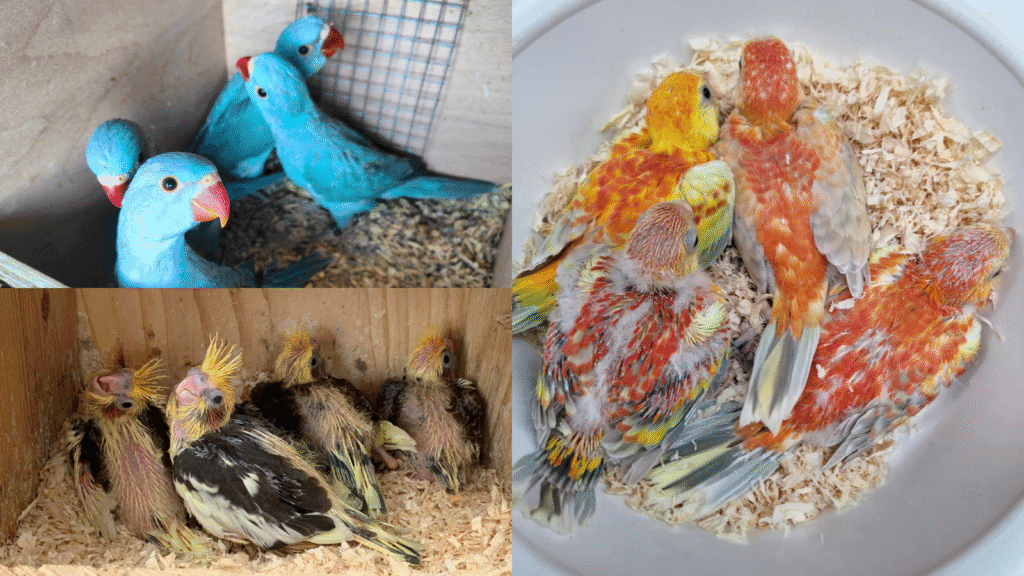
🧑⚕️ Common Health Issues
Birds are prone to a range of illnesses, including mites, respiratory infections, and egg binding. Signs of illness can be subtle, so prevention through diet, hygiene, and observation is crucial. Regular vet checkups are highly recommended.
🛡️ Laws and Conservation Status
Some birds are protected by international or national laws due to endangered status (e.g., CITES regulations). Learn the legal aspects of bird keeping, especially for wild-caught, exotic, or migratory species.
🧬 Subspecies and Regional Variants
Many species are divided into subspecies — often based on minor differences in plumage or range. Knowing these helps with identification, conservation, and responsible breeding practices.
🔀 Hybridization
Hybrid birds are the result of crossbreeding between different species or subspecies. This can occur in captivity or in the wild and may result in unique coloration or behavior — but it can also affect genetic purity.
🐤 Avicultural Notes
Tips from experienced birdkeepers on practical care: aviary design, compatibility with other species, breeding tricks, or behavioral observations. This insight is gold for both hobbyists and professionals.
📖 Terminology
Birdkeeping involves a lot of specialized vocabulary. Here are a few essentials:
- Down feathers – Soft, insulating feathers on chicks.
- Preen gland – Produces oils that keep feathers waterproof.
- Nestling days – Time a chick stays in the nest.
- Brood host – A bird that raises another species’ chicks.
- Roosting nest – Secondary nest that may distract predators.
🧠 Mimicry and Intelligence
Especially in parrots and corvids, mimicry and advanced problem-solving are common. This section explores cognitive traits, vocal learning, and enrichment needs for mentally active species.
🎡 Enrichment and Mental Health
Birds need stimulation to avoid boredom, stress, and destructive behaviors. This includes foraging toys, varied perches, puzzles, and social interaction. Rotating toys and changing the environment is highly beneficial.
🌐 Migration and Seasonal Movements
Some birds migrate long distances seasonally, while others are partial or altitudinal migrants. Understanding migration is key for conservation, breeding timing, and interpreting natural behaviors.
📌 Conclusion
From taxonomy to training, birds offer endless fascination and complexity. Whether you’re caring for finches, parrots, or wild visitors in your backyard, knowing their biology, behavior, and needs is the first step to a healthy and enriching relationship with them.
faq
🐤 What are the easiest bird species to care for?
Some of the easiest birds to care for include Zebra Finches, Budgies (Parakeets), and Canaries. They are hardy, adaptable, and generally low-maintenance, making them ideal for new bird owners.
🍽️ What do birds eat in captivity?
Captive birds need a balanced diet that mimics their natural one. This includes high-quality seed mixes, fresh vegetables, pellets, and in some cases, insects or egg food for breeding birds. Clean, fresh water must be available at all times.
🐣 How do I know if my birds are ready to breed?
Birds ready to breed may show increased singing, courtship behavior, nest building, or territorial displays. Males often become more vocal and active, while females may spend more time in nesting areas.
🪶 Why is my bird losing feathers?
Feather loss can be due to molting, a natural process where birds shed and regrow feathers. However, excessive feather loss may indicate stress, poor nutrition, or mites, so monitor the bird’s overall health closely.
💢 Can I keep different bird species together?
Yes, but with caution. Some species are peaceful (like Society Finches), while others may be territorial or aggressive. Always research compatibility and ensure there’s enough space, multiple feeders, and hiding spots.
🧠 Are birds intelligent pets?
Yes! Some species, particularly parrots and corvids, show advanced problem-solving, mimicry, and learning ability. They need enrichment, social interaction, and mental stimulation to stay happy.
🧼 How often should I clean my bird’s cage or aviary?
Cages should be spot-cleaned daily (food trays, droppings) and deep-cleaned weekly. A clean environment helps prevent diseases and keeps birds healthy and stress-free.
🏥 What are common signs of illness in birds?
Watch for fluffed feathers, lethargy, changes in droppings, labored breathing, loss of appetite, or abnormal posture. Birds often hide symptoms, so early detection is key.
🌡️ What is the ideal temperature for pet birds?
Most captive birds thrive between 65–75°F (18–24°C). Avoid drafts and sudden temperature changes. Tropical species may need slightly warmer and more humid conditions.
🧬 What is sexual dimorphism in birds?
Sexual dimorphism refers to visible differences between male and female birds, often in plumage color, size, or behavior. In species like Gouldian Finches, males are brighter than females.
Did you enjoy this article?
Help other pet lovers benefit too — Share it on social media! 🐾💚
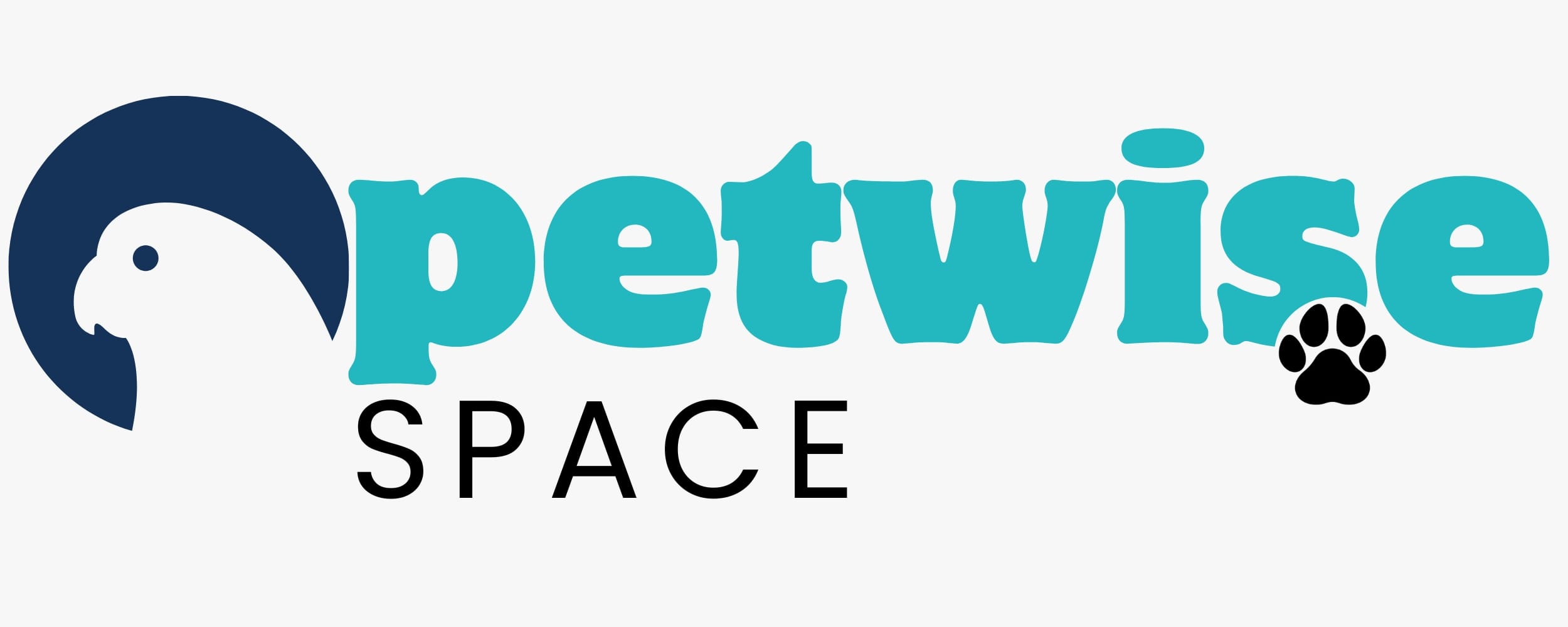
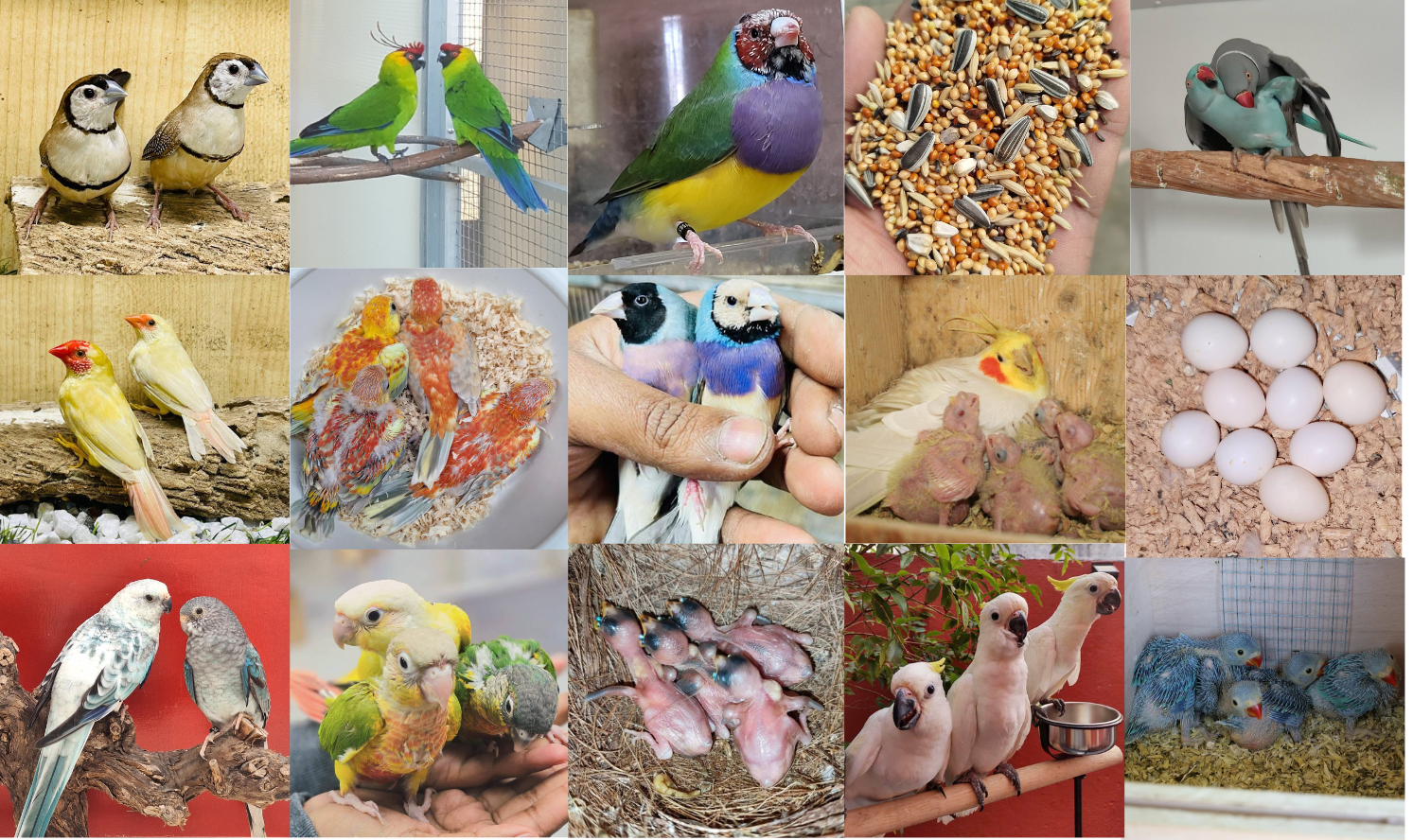
Leave a Reply